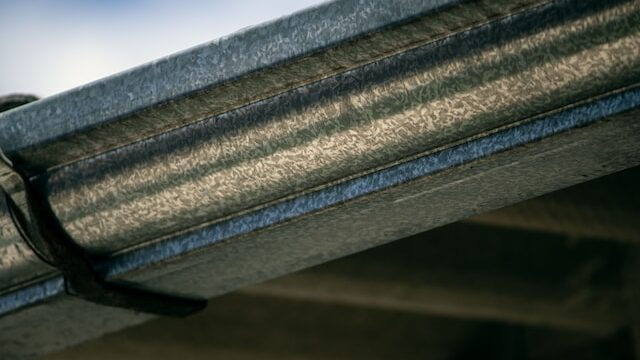Gutter installation and replacement are joint home improvement projects that can often be completed within a day. Depending on the complexity of the home, the roofer will inspect the eaves and fascia board for rot or damage before beginning.
Work from a ladder rather than off the roof to reduce falls and prevent damage to gutters. Use a standoff to rest the ladder on, preventing scratches and dents.
Preparation
Gutter installation requires accurate measurements and a well-thought-out plan. This ensures you have enough materials to complete the project and prevents wasted time and money making unnecessary trips to the hardware store.
One of the most critical aspects of gutter installation is creating a fall or slope to move water toward downspouts. Ideally, gutters should have a half-inch downward slope for every ten feet of gutter run. Mark the high point of each gutter slope on the fascia board by lightly tacking a nail at the top and then marking the low end with a chalk line.
Before gutter installation Oregon City, it’s also essential to check for water damage around the home, such as rotted soffits. If you do not repair these areas, moisture can cause significant problems. This could include mold growth, wood rot, and drywall damage. To prevent this, seal all seams and joints with gutter sealant.
Materials
You need a few basic supplies when installing metal or PVC gutters. You will need gutters, downspouts, and end caps, which prevent water from splashing onto the fascia boards. You will also need elbows to transition from the gutter eavestrough to the downspout and sealant for the joints.
Aluminum gutters are famous because they resist corrosion, hold up well to dents, and are inexpensive. They are often painted in various colors to match your home’s siding.
Plastic gutters are made from several different polymers, including PVC, that can be colored throughout or in sections. They are resistant to corrosion, rust, and UV rays. They are also lightweight and require little maintenance. You can fasten these gutters with short sheet-metal screws or rivets. If you use rivets, you should permanently seal them with caulking to prevent leakage. The type of caulk used depends on your climate and roof.
Cutting
Gutters are a necessary home feature that keeps buckets of rainwater off our beautiful landscaping, away from our siding, and out of the foundation. They protect our homes from moisture damage and prevent moss and mildew growth.
A high-quality roofing professional will assess the existing gutter system and make any repairs before beginning the installation process. He will also take precise measurements of your home, including where the new gutters and downspout outlets should be positioned.
Planning for a slope in the gutter system for longer runs is essential. Planning a half-inch downslope for every ten feet of gutter run is a good rule of thumb. This will ensure that your gutters work effectively. If you are using gutter sections that overlap, use pliers to crimp the end of the upper section into the spliced side of the lower section. Then, join the two sections with self-tapping screws or rivets.
Installation
Gutters are unassuming, but they’re critical to your home. They stop buckets of rainwater from pounding your landscaping, prevent severe soil erosion around the foundation of your house, and protect your siding from discoloration.
During installation, your roofing contractor will precisely measure where new gutters should go. This helps them to ensure the gutters fit correctly and function properly.
The roofer will also look at the slant of your roof and determine how far down your gutters should extend. Gutter sections that align directly with the roof shingles impair the natural water flow. Ideally, gutters should extend out and away from the home to drain water efficiently.
